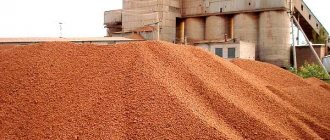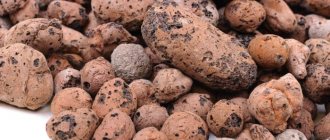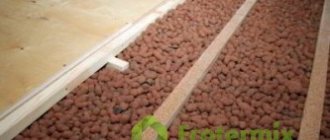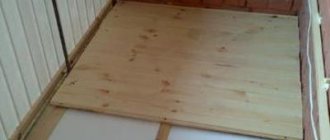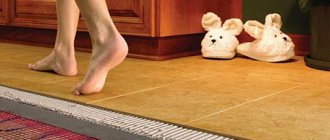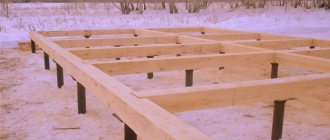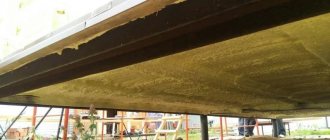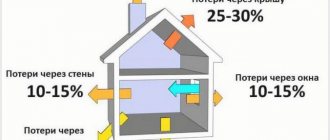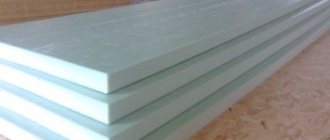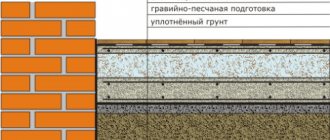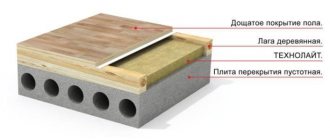Insulating a residential or commercial building with a cold roof by insulating the ceiling with expanded clay is considered one of the most effective ways to prevent heat loss. In regions with severe frosts, thermal insulation is completely irreplaceable. The use of a heat insulator such as expanded clay makes the process simpler and cheaper. The material effectively increases the level of sound insulation of a home and helps improve the fire safety of the building. There are pros and cons of expanded clay that need to be considered.
A little about expanded clay
Expanded clay is a material consisting of granules. They themselves are made from natural slates or natural clay. Expanded clay granules undergo high-temperature treatment, as a result of which they significantly increase their size and obtain a porous structure. The surface of the particles acquires a brown or reddish color, compacted and smooth texture.
The finished material has the following set of qualities:
- the density indicator ranges from 250 to 600 kg/cubic meter. m;
- the thermal conductivity coefficient is about 0.091–1 W/m °C;
- water absorption of the material is at a level of 8 to 20%;
- Standard frost resistance is at least 25 cycles.
Expert opinion
Konstantin Alexandrovich
Expanded clay is considered an advantageous material for ceiling insulation because it has a low price. The installation process is extremely simple, and its service life is several decades. When used, expanded clay granules are not exposed to negative environmental influences and do not support the process of decay.
Advantages and disadvantages of using expanded clay for thermal insulation
Insulating the ceiling using expanded clay has a number of advantages:
- Increased service life of the thermal insulator;
- A high level of fire safety, since the material does not support combustion, and when heated there is no release of toxic substances that could pose a danger to human and animal health, as well as the environment.
- The porous structure of the insulator makes it possible to achieve a low weight of the material, which analogues cannot boast of.
- The insulating material does not provide a habitat for harmful insects, rats and mice to live and breed, and also prevents the development of fungi and mold.
- The low cost of expanded clay makes it widely available for use in construction.
- The material will provide high-quality insulation against heat loss and the penetration of extraneous sounds, which will have a beneficial effect on the atmosphere of your home.
- The heat insulator can effectively absorb moisture without increasing its mass or losing its basic qualities.
- Expanded clay chips or crushed stone from it do not cause allergic reactions, since the material is made from natural raw materials.
- The insulated surface is covered with a mound of material, its use is as simple as possible.
- The structure of expanded clay is an obstacle to air penetration. This significantly increases the level of heat insulation and promotes natural convection.
In addition to its positive qualities, the material also has objective disadvantages:
- The degree of energy efficiency of expanded clay is directly dependent on the thickness of the insulation layer. A backfill thickness of 20-40 centimeters does not make sense.
- The material must be carefully protected from rain and snow.
- It is best to apply a layer of insulating material to reinforced concrete floors. This is due to the fact that monolith beams will be able to withstand significant loads, and will also prevent granules from spilling onto the lower floor.
- When planning to install an insulated ceiling in a house built of wood, take care to protect the expanded clay with a film with a vapor barrier function. It must be placed under the heat insulator and on top of it. This will help create a protective layer that will protect the insulation from moisture.
It is prohibited to lay expanded clay insulation on suspended ceiling structures that are lined underneath with lath or clapboard. If we take into account the total weight of the insulating structure, the amount of material and its structure, it is very likely that the suspended ceiling will be damaged and its integrity will be compromised. Moreover, a collapse will occur inside a residential area, which could result in damage to people or valuable property.
Pros and cons of insulating the attic of a house with expanded clay
Expanded clay is not a new product on the construction market. Insulation has been used since the last century. However, its popularity continues to persist due to its many positive qualities.
Expanded clay has been used for insulation of construction sites since the last century.
Expanded clay belongs to the group of bulk thermal insulation. It is used more for insulating horizontal surfaces, which includes the ceiling on the attic side. When thermally insulating vertical structures, additional structures are created that allow backfilling.
Thermal insulation consists of unevenly shaped granules of different sizes. The main manufacturing material is shale clay, which is fired. Each granule forms a hard shell on top and a porous body inside. Due to the presence of air bubbles, the thermal insulation properties increase.
Important! Popular insulation materials, such as polystyrene foam, polyethylene foam, polyurethane foam, etc., are based on the principle of expanded clay porosity.
The main advantages are:
- Fire safety. Since expanded clay is made of clay, even an open fire source is safe for it. Natural material does not emit harmful substances when heated.
- Light weight. Due to their porosity, clay granules are lightweight, which makes it possible to fill the ceiling from the attic side with a thick layer.
- Resistant to damage. The granules are not chewed by mice; they can withstand mechanical loads and are resistant to the destructive effects of fungi and putrefactive microorganisms.
- Ease of use. To insulate any structural element, the material is simply covered with a layer of a certain thickness.
- Long service life. The granules withstand extreme conditions and do not lose their thermal insulation properties after 25 cycles of freezing and thawing.
- Affordable price.
One of the disadvantages is the large dust formation when working with granules. Lifting material into the attic for insulation is problematic. Adaptations and assistants will be required. If the backfill area is large, you will have to hire a crane, which leads to additional costs.
Porosity indicates that the granules absorb moisture. When insulating an attic, the backfill layer on both sides must be covered with a membrane. The material is light, but not so light that a false ceiling can withstand it. The ceiling must be durable or insulation with granules will have to be abandoned.
Calculation of the required thickness of the expanded clay layer when insulating the ceiling
You need to decide on the right amount of insulating material before purchasing it. The thermal insulation effect becomes pronounced only if the minimum level of expanded clay filling is 40 centimeters and above for a wooden house and over 30 centimeters for concrete buildings.
The process of insulating a ceiling with expanded clay in a private house consists of the following steps:
- Complete dismantling of the previous insulating coating, if present, and cleaning the surface of dirt and debris.
- Laying a vapor barrier layer. The film for waterproofing should be laid with an overlap on the edges of adjacent fragments of material. The overlap width is from 15 to 20 centimeters. The junction points must be secured with construction tape.
- Backfilling of the material itself for thermal insulation. First, lay a layer consisting of granules of small diameter. After this, a larger fraction is placed on top. The finishing layer should again be made of fine expanded clay.
- Pouring the final floor screed.
When calculating the required backfill thickness for thermal insulation, it is necessary to take into account the level of loads to which the ceiling will be subjected. Accurate calculations will allow for maximum reduction of heat loss and reduce pressure on the load-bearing parts of the building structure. Once the parameter has been calculated, you can begin to determine the volume of material that will be spent.
The correct calculation is made in this way: the 1-centimeter thickness of the expanded clay layer is distributed evenly over 1 square meter. Insulator consumption in liters is calculated differently - 1 centimeter of heat insulator = 10l/1m2. To obtain the result, the area of the entire ceiling surface is multiplied by the standard insulation consumption per 1 square meter.
Insulation on the ground
For floors on the ground, it is undesirable to scatter insulation due to shrinkage of the thermal insulation. The first step is to make a base of concrete or wood on which expanded clay will be poured. An exception is the technology of insulating the foundation of a building, when a trench is created around it and filled with a solution of this material.
Floor insulation over the ground can also be carried out directly in the pack. In this case, it is enough to lay the material in a fraction of 10-20 mm, which is in packages on a layer of compacted sand. For 1 sq. m of surface that can be leveled and compacted in advance requires laying 3 bags, which must be filled so much that the layer thickness reaches 15-20 cm.
After placing in the packages, cuts or holes should be made so that no air remains inside them, and the granules themselves do not spill out. The free space between the bags must be filled with loose material of a similar or finer fraction. In the same way, work must be continued until the space is completely filled.
Note! This technology is most suitable for ground floors in non-residential structures, for example, in summer kitchens, garages and other similar types of buildings.
Do-it-yourself ceiling insulation
The process of thermal insulation of the ceiling in a summer house using expanded clay is quite simple. The work is carried out in two stages - in the first, the vapor barrier layer is laid, in the second, expanded clay material is backfilled.
Step-by-step manual
The technology for carrying out the work is not too complicated and is carried out as follows:
- Laying a layer for insulation from steam. It can be laid over the entire area on a flat surface. If the design provides for the presence of beams and joists, the film is laid in the space between them. In the second case, it is necessary to provide for the ends of the film to go directly onto the beams with an overlap of at least 10 centimeters. The seams are carefully taped for construction.
- Adding insulating granules. It will be better if they are heterogeneous in particle size. You can use expanded clay sand for the starting and final layers, and gravel for the middle layer. So the density of the layer as a whole will be higher. It is possible to determine whether the required level of backfill thickness has been achieved in a simple way. A reinforcement rod is inserted into the thickness of the material, on which markings are made using electrical tape or adhesive tape.
- The organization of a waterproofing layer will help to qualitatively protect the insulating material from moisture penetration. If the under-roof space is not used as a living space, it can be laid directly under the roof.
- If the attic is intended for living, you will need to fill the screed and take care of installing the finished floor. If this is an unheated attic, then a thin sand layer is placed under the film material.
The material for insulating the heat insulator from moisture can be either a regular polyethylene film or specialized materials such as isospan or roofing felt. In this case, the joints are sealed with bitumen, and sizing is carried out using metallized tape. As a result, we can draw up a summary - the use of such insulating material for insulating the ceilings of wooden houses is very effective. In addition, the budget will not suffer too much due to the low cost of expanded clay.
Advice from professionals
- If there is a residential attic floor above the ceiling to be insulated, it will be necessary to provide an air gap for ventilation located between the expanded clay layer and the floor covering. It will protect you from creaking noises that will be made when walking
- A properly laid layer of expanded clay granules will not only maintain a comfortable microclimate inside the home, but will also take care of insulation from external noise.
- If a screed is installed on top of expanded clay insulation, you should give preference to a concrete screed. Popular mixtures with a self-leveling effect cannot be used. Their texture is too liquid, and therefore the mass will penetrate between the expanded clay granules and saturate them through and through, significantly increasing the consumption of material. If there is a need to create floors based on pouring, the self-leveling mixture is applied in a thin layer and only on top of the concrete coating.
Insulation parameters
Expanded clay comes in 3 fractions depending on the size of the resulting granules:
- crushed stone – granules with a diameter of 0.5 to 1 cm,
- gravel – granule sizes from 1 to 4 cm,
- sand – granules do not exceed 0.5 cm.
In terms of thermal insulation characteristics, a 12 cm layer of expanded clay is equal to brickwork up to 100 cm thick or a wood floor 30 cm thick.
The main operational parameters of the material include:
- environmental Safety,
- airflow capacity,
- fire resistance,
- sound insulation,
- durability,
- resistance to biological contamination,
- low thermal conductivity,
- resistance to temperature changes,
- strength,
- light weight,
- affordable price,
- ease of installation.
High hygroscopicity is the main disadvantage of insulation. Granules are susceptible to rapid absorption and retention of excess moisture, which can lead to a decrease in the thermal insulation properties of the material.
